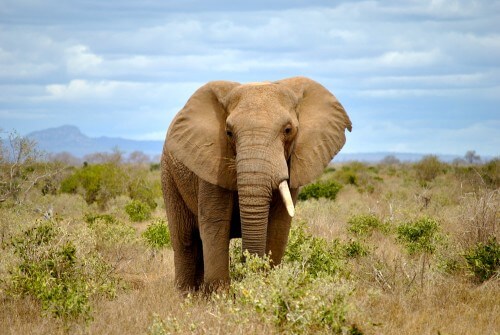For several years, the criminal activity of killing elephants for the purpose of trading in their tusks has been increasing. Since 2009, the killing of elephants has reached industrial proportions when hundreds of elephants are killed every year. To date, about 50 tons of elephant tusks have been seized in ports and warehouses.

For several years, the criminal activity of killing elephants for the purpose of trading in their tusks has been increasing. Since 2009, the killing of elephants has reached industrial proportions when hundreds of elephants are killed every year. To date, about 50 tons of elephant tusks have been seized in ports and warehouses.
Since it is clear that this is only a small part of the amount that reaches the market, by careful calculation in recent years about fifty thousand elephants have been murdered. According to the report of the International Convention on Trade in Endangered Species (CITES) and other environmental organizations, about 60 elephants are killed every day. Since the 500s, the elephant population in Africa has halved, and it currently stands at less than XNUMX individuals in all of Africa.
Some time ago Mand the Security Council of the United Nations (hereafter the Council) a decision that allows the budgeting of activities to prevent poaching of protected animals in the world in general and in Africa in particular. We still haven't seen actual results for the decision but now following publications about killing elephants the Security Council has joined many countries.
According to publications accompanied by photos, large quantities of tusks and ivory products are destroyed in the countries where the "goods" are consumed as well as in the countries of origin. In Vietnam, Hong Kong, Thailand and even China, huge quantities of tusks and their products were destroyed. There are reports in the media about the seizure of loads of tusks and their destruction in African countries and even in France tons of tusks were burned in front of the Eiffel Tower.
Hunters and traders are punished with much harsher and heavier punishments than was customary until now, all this in order to "be seen and be seen", to show the criminals the seriousness of the authorities' intention to stop the killing of elephants.
Laws to protect wild animals in general and elephants in particular exist in all African countries, but laws alone do not stop the killing. One of the obstacles to enforcing the laws is corruption among the heads of government. Recognizing the problem, the council's decision was published that imposes sanctions on people or companies that engage in the deadly trade on governments that will not enforce the laws.
The intervention of the council came because of the environmental concern but more because it is becoming more and more clear that armed gangs (militia) finance their activities by selling elephant tusks (and rhinoceros horns). It also turns out that international criminal organizations are involved in the trade, starting with "ordering the goods", through transportation to markets and distribution to consumers. The Council notes the involvement of armed gangs in the Congo (DRC) in the Central African Republic, Sudan, Somalia, Uganda and more.
This is the first time that the council imposes sanctions on governments and private individuals with the intention of stopping the killing of elephants and the trade in products from protected wild animals, since until today the killing of elephants is considered an environmental crime. The council's knowledge of the murderous activity of the gangs and criminal organizations led to a change in attitude and today it is a criminal activity and the punishments accordingly.
According to the director of the World Wildlife Fund (WWF), there is no "silver bullet" in the decision, but if until today the killing of elephants is considered environmental damage, then following the decision, the destructive activity will be considered a criminal offense, which will give the enforcers effective tools to arrest, prevent and judge criminals accordingly.
The decision will allow the activities of the customs authorities, the treasury, the police and the military in the countries from which the tusks are exported and in the countries of destination, in addition to the activities of the bodies for the preservation of nature and the environment, thus creating a "tongs" operation that will stop or at least moderate the murderous activity.
It is clear that the environmentalists accept the new decision with satisfaction and hope that the activity and sanctions will be useful for improving the condition of wild animals in general and elephants in particular, since it has already been said that the time has come that instead of controlling the environment for the sake of the human population, there will be control of the human population for the sake of the environment!

6 תגובות
It is not understood that there are still people who kill elephants for ivory.
I'm not entering into a debate about veganism, because for me there is a difference between killing for the sake of eating and between pleasure/decoration.
I hope they will be punished.
Anonymous (unidentified) user
I think it's a genius idea!
Perhaps it is possible to paint the elephants' tusks with a black color that is deeply absorbed in paintball
Like chewing gum that gets caught and sticks and destroys the outer texture of the teeth and slowly infuses colors that damage the teeth
Hunters who see black tusks will think twice about whether it's worth the effort
In my opinion, "destroying goods" is not enough. Every dealer, and seller, of body parts of elephants, rhinos, and sharks should be put on criminal trial. Interpol should be in the picture.